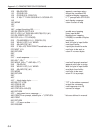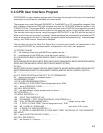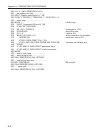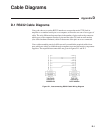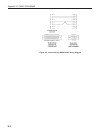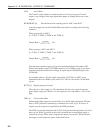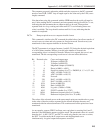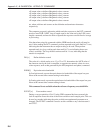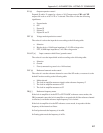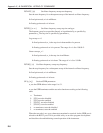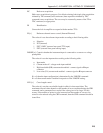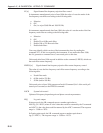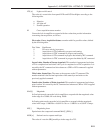
E-4
Appendix E, ALPHABETICAL LISTING OF COMMANDS
CH n
1
[n
2
] Analog output control
Defines what outputs appear on the rear panel CH1 and CH2 connectors according
to the following table:
n
2
Signal
0 X %FS
1 Y %FS
2 Magnitude %FS
3 Phase 1: +9 V = +180°, -9 V = -180°
4 Phase 2: +9 V = 360°, -9 V = 0°
5 Noise %FS
6 Ratio: (1000 × X)/ADC 1
n
1
is compulsory and is either 1 for CH1 or 2 for CH2
CP [n] Input coupling control
The value of n sets the input coupling mode according to the following table:
n Coupling mode
0AC
1DC
DAC[.] n
1
[n
2
] Auxiliary DAC output controls
Sets the voltage appearing at the rear panel DAC1 and DAC2 outputs.
The first parameter n
1
, which specifies the DAC, is compulsory and is either 1 or 2.
The value of n
2
specifies the voltage to be output.
In fixed point mode it is an integer in the range -12000 to +12000, corresponding to
voltages from -12.000 V to +12.000 V.
In floating point mode it is in volts.
DC[.] n Dump acquired curve(s) to computer
In fixed point mode, causes a stored curve to be dumped via the computer interface in
decimal format.
In floating point mode the SEN curve (bit 4 in CBD) must have been stored if one or
more of the following outputs are required in order that the lock-in amplifier can
perform the necessary conversion from %FS to volts or amps: X, Y, Magnitude,
Noise.
One curve at a time is transferred. The value of n is the bit number of the required
curve, which must have been stored by the most recent CBD command. Hence n can
range from 0 to 15. If for example CBD 5 had been sent, equivalent to asserting bits
0 and 2, then the X and Magnitude outputs would be stored. The permitted values of
n would therefore be 0 and 2, so that DC 0 would transfer the X output curve and
DC 2 the Magnitude curve.



